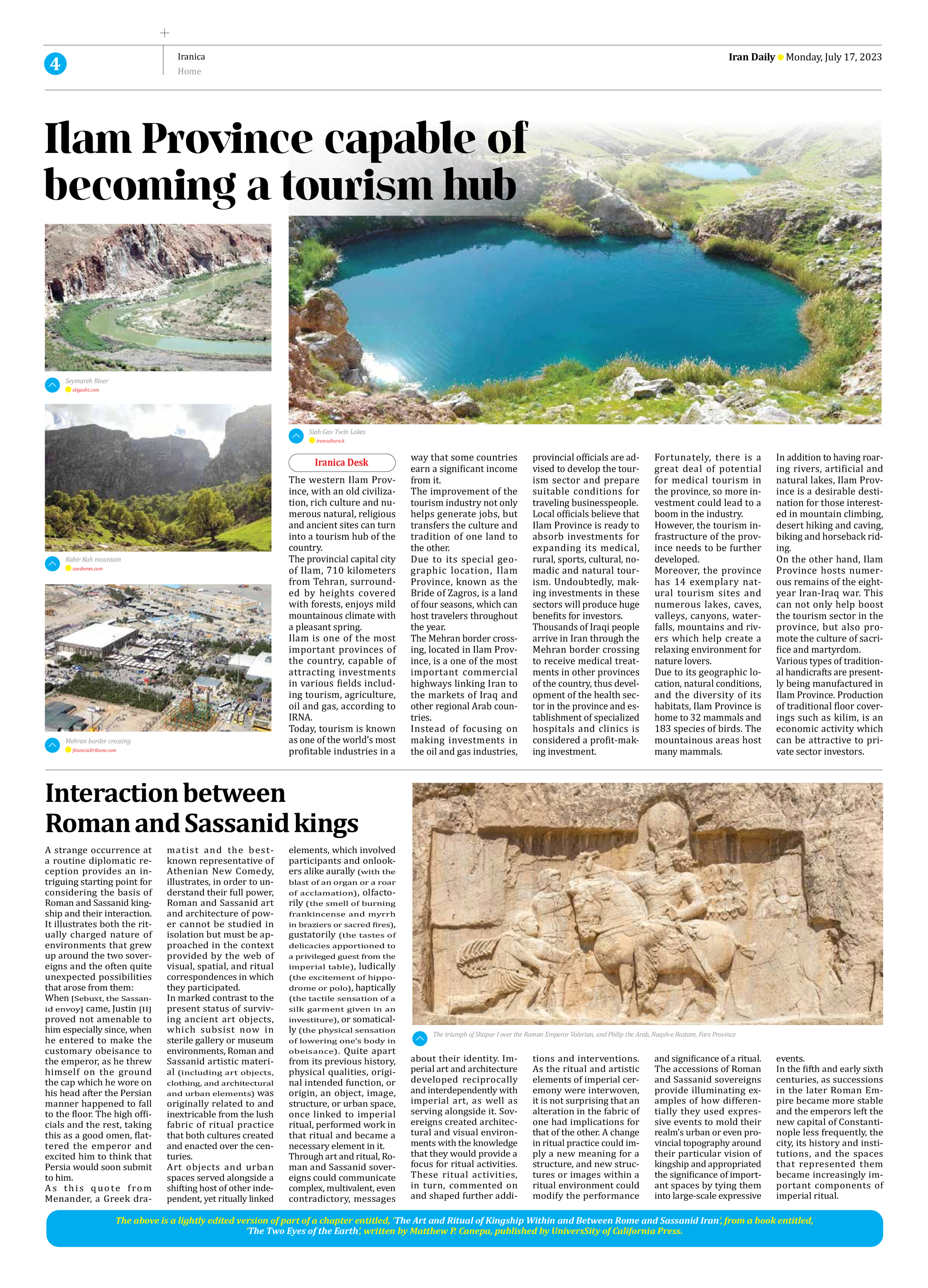
Interaction between Roman and Sassanid kings
A strange occurrence at a routine diplomatic reception provides an intriguing starting point for considering the basis of Roman and Sassanid kingship and their interaction. It illustrates both the ritually charged nature of environments that grew up around the two sovereigns and the often quite unexpected possibilities that arose from them:
When [Sebuxt, the Sassanid envoy] came, Justin [II] proved not amenable to him especially since, when he entered to make the customary obeisance to the emperor, as he threw himself on the ground the cap which he wore on his head after the Persian manner happened to fall to the floor. The high officials and the rest, taking this as a good omen, flattered the emperor and excited him to think that Persia would soon submit to him.
As this quote from Menander, a Greek dramatist and the best-known representative of Athenian New Comedy, illustrates, in order to understand their full power, Roman and Sassanid art and architecture of power cannot be studied in isolation but must be approached in the context provided by the web of visual, spatial, and ritual correspondences in which they participated.
In marked contrast to the present status of surviving ancient art objects, which subsist now in sterile gallery or museum environments, Roman and Sassanid artistic material (including art objects, clothing, and architectural and urban elements) was originally related to and inextricable from the lush fabric of ritual practice that both cultures created and enacted over the centuries.
Art objects and urban spaces served alongside a shifting host of other independent, yet ritually linked elements, which involved participants and onlookers alike aurally (with the blast of an organ or a roar of acclamation), olfactorily (the smell of burning frankincense and myrrh in braziers or sacred fires), gustatorily (the tastes of delicacies apportioned to a privileged guest from the imperial table), ludically (the excitement of hippodrome or polo), haptically (the tactile sensation of a silk garment given in an investiture), or somatically (the physical sensation of lowering one’s body in obeisance). Quite apart from its previous history, physical qualities, original intended function, or origin, an object, image, structure, or urban space, once linked to imperial ritual, performed work in that ritual and became a necessary element in it.
Through art and ritual, Roman and Sassanid sovereigns could communicate complex, multivalent, even contradictory, messages about their identity. Imperial art and architecture developed reciprocally and interdependently with imperial art, as well as serving alongside it. Sovereigns created architectural and visual environments with the knowledge that they would provide a focus for ritual activities. These ritual activities, in turn, commented on and shaped further additions and interventions. As the ritual and artistic elements of imperial ceremony were interwoven, it is not surprising that an alteration in the fabric of one had implications for that of the other. A change in ritual practice could imply a new meaning for a structure, and new structures or images within a ritual environment could modify the performance and significance of a ritual.
The accessions of Roman and Sassanid sovereigns provide illuminating examples of how differentially they used expressive events to mold their realm’s urban or even provincial topography around their particular vision of kingship and appropriated the significance of important spaces by tying them into large-scale expressive events.
In the fifth and early sixth centuries, as successions in the later Roman Empire became more stable and the emperors left the new capital of Constantinople less frequently, the city, its history and institutions, and the spaces that represented them became increasingly important components of imperial ritual.
The above is a lightly edited version of part of a chapter entitled, ‘The Art and Ritual of Kingship Within and Between Rome and Sassanid Iran’, from a book entitled,
‘The Two Eyes of the Earth’, written by Matthew P. Canepa, published by UniversSity of California Press.







